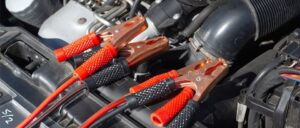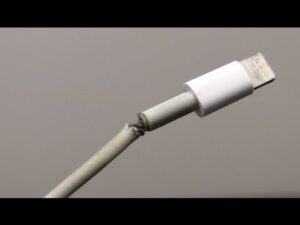Is your wireless charger giving you trouble? Wondering why it’s not working? Well, fret not! We’ve got you covered with all the answers you need. Whether you’re a tech enthusiast or just getting started with wireless charging, understanding why your wireless charger isn’t working can be a bit puzzling. But fear not, because we’re here to break it down for you in simple terms. So, why is your wireless charger not working? Let’s dive right in and find out.
Why is My Wireless Charger Not Working?
Introduction
Wireless chargers have become a popular and convenient way to power up our devices without the hassle of cords and cables. However, it can be frustrating when your wireless charger doesn’t seem to work as expected. In this article, we will explore the various reasons why your wireless charger may not be working and provide troubleshooting tips to help you resolve the issue.
Compatibility Issues
One of the main reasons why your wireless charger may not be working is compatibility issues. Not all devices are compatible with wireless charging technology, so it’s important to ensure that your device supports wireless charging before investing in a wireless charger. Some common compatibility issues include:
- Your device may not have built-in wireless charging capabilities. In such cases, you will need to use a wireless charging adapter or a compatible case that enables wireless charging.
- Not all wireless chargers support fast charging. If your device supports fast charging and you’re using a wireless charger that doesn’t, it may not charge your device as quickly as expected.
- Wireless chargers use different charging standards, such as Qi or PMA. Make sure your device and wireless charger are compatible with the same standard for optimal charging performance.
If you’re unsure about the compatibility of your device and wireless charger, it’s best to consult the user manual or contact the manufacturer for guidance.
Charging Pad Placement
The placement of your device on the charging pad can significantly impact its charging efficiency. While wireless charging offers convenience, it requires proper alignment and contact between the charging pad and your device. Here are some factors to consider:
- Make sure your device is placed in the center of the charging pad. If it’s off-center or not properly aligned, it may not charge or charge slowly.
- Remove any obstructions between the charging pad and your device, such as cases, covers, or pop sockets. These can interfere with the charging process.
- Some wireless chargers have multiple coils or charging zones. If your charger has this feature, experiment with different placement options to find the sweet spot for optimal charging.
It’s also worth noting that wireless chargers may have specific positioning requirements based on the device you’re using. Refer to the user manual or manufacturer’s guidelines for recommended charging pad placement.
Power Source and Cable Issues
The power source and cable you use to connect your wireless charger can also impact its functionality. Consider the following factors:
- Ensure that the power source you’re using is providing sufficient power output. Using an underpowered power adapter or USB port may result in slow or unreliable charging.
- Check the cable connecting the wireless charger to the power source. Damaged or frayed cables can disrupt the charging process. Replace the cable if necessary.
- Using third-party cables or adapters may not provide the same level of compatibility and charging performance as the original ones that came with your wireless charger. Whenever possible, use the cables and adapters provided by the manufacturer.
By addressing any power source or cable issues, you can ensure a more reliable and efficient charging experience with your wireless charger.
Device Issues
Sometimes, the issue may not lie with the wireless charger itself but rather with your device. Here are a few device-related factors to consider:
- Restart your device: Occasionally, a simple restart can resolve minor software glitches that may be preventing your device from wirelessly charging.
- Remove metal objects: Some devices may not charge wirelessly if there are metal objects, like coins or keys, between the charging pad and your device. Remove any such objects and try charging again.
- Check for software updates: Keeping your device’s software up to date can help address any compatibility issues and improve wireless charging performance.
If you’ve tried troubleshooting these device-related factors and your device still doesn’t charge wirelessly, it’s advisable to contact the manufacturer’s customer support for further assistance.
Environmental Factors
Certain environmental factors can also affect the performance of your wireless charger. Consider the following:
- Temperature: Extreme temperatures, both hot and cold, can impact the charging efficiency of your wireless charger. Avoid exposing your charger to direct sunlight, excessive heat, or freezing temperatures.
- Interference: Wireless chargers can be susceptible to interference from other electronic devices. Keep your charger away from sources of electromagnetic interference, such as Wi-Fi routers, microwaves, or cordless phones.
Taking these environmental factors into account and creating an optimal charging environment can help maximize the effectiveness of your wireless charger.
In conclusion, there can be several reasons why your wireless charger may not be working as expected. Compatibility issues, improper placement, power source and cable problems, device issues, and environmental factors can all contribute to charging problems. By troubleshooting these different factors, you can often resolve the issue and enjoy the convenience of wireless charging once again.
Remember to always refer to the user manual or contact the manufacturer for specific guidance if you’re facing persistent issues with your wireless charger. With proper troubleshooting and care, you can ensure a seamless wireless charging experience for your devices.
Frequently Asked Questions
Why is my wireless charger not working?
There can be several reasons why your wireless charger is not working. Here are some common issues and their solutions:
My device is not charging when placed on the wireless charger, what could be the problem?
If your device is not charging when placed on the wireless charger, the first thing to check is if your device is compatible with wireless charging. Not all devices support wireless charging, so make sure yours does. Additionally, ensure that your device is properly aligned with the charger’s charging coil. Misalignment can prevent charging. Finally, check if there are any foreign objects like dust or debris on the charging surface or on the back of your device, as they can interfere with the charging process.
I have a compatible device and it is properly aligned, but it still won’t charge wirelessly. What should I do?
If your device is compatible with wireless charging and properly aligned, but it still won’t charge wirelessly, check if your wireless charger is receiving power. Make sure it is plugged into a working power source and that the power cable is securely connected to both the charger and the wall outlet. If the charger has an indicator light, ensure that it is illuminated. If the charger is not receiving power, try using a different power outlet or a different charging cable.
The wireless charger stops charging intermittently. How can I fix this issue?
If your wireless charger stops charging intermittently, it could be due to overheating. Wireless chargers can generate heat during the charging process, and if they reach a certain temperature threshold, they may automatically pause charging to prevent damage. Ensure that your charger is placed on a flat, well-ventilated surface and that there are no obstructions blocking the airflow around it. If the issue persists, try using a different wireless charger or contacting the manufacturer for further assistance.
My wireless charger has been working fine for a while, but suddenly it has stopped working. What might be the cause?
If your wireless charger has been working fine and suddenly stops working, there could be a few possible causes. Firstly, check if there are any software updates available for your device. Sometimes, firmware updates can affect wireless charging functionality, and updating your device’s software may resolve the issue. Additionally, inspect the charging cable and connectors for any signs of damage or wear. Faulty cables can prevent the charger from working properly. If none of these solutions work, it is recommended to consult the manufacturer or seek professional help.
Final Thoughts
If you find that your wireless charger is not working, there could be a few reasons for this. First, check if the charger is properly connected to a power source and if the cable is in good condition. Ensure that your device is compatible with wireless charging and that it is properly aligned on the charging pad. Sometimes, a case or foreign object on your device can interfere with the charging process. Lastly, if none of these solutions work, it may be worth trying a different charger or contacting the manufacturer for further assistance. So, if you’re wondering, “Why is my wireless charger not working?” These troubleshooting steps can help you identify and resolve the issue.



